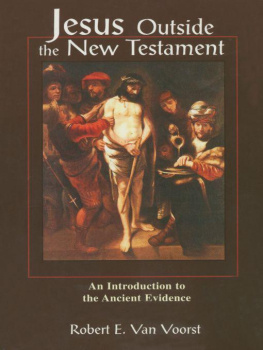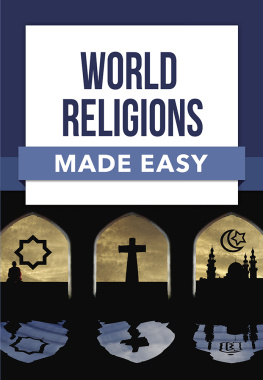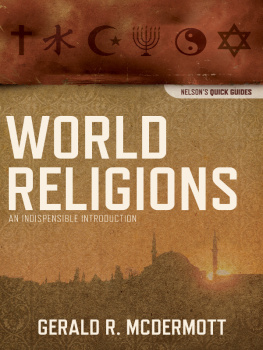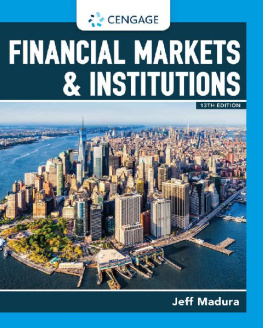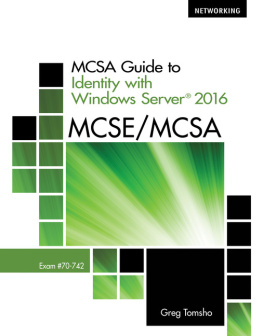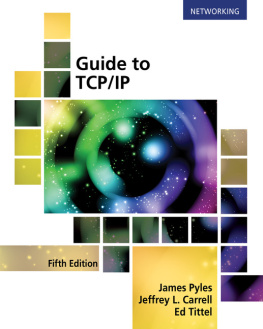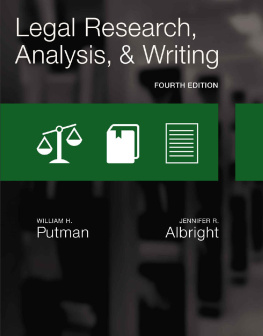RELG: World
Table of Contents
Guide
List of Illustrations
Copyright Statement
RELG: World
COPYRIGHT 2019, 2017 Cengage Learning, Inc.
ALL RIGHTS RESERVED. No part of this work covered by the copyright herein may be reproduced or distributed in any form or by any means, except as permitted by U.S. copyright law, without the prior written permission of the copyright owner.
For product information and technology assistance, contact us at Cengage Customer & Sales Support, 1-800-354-9706
For permission to use material from this text or product, submit all requests online at www.cengage.com/permissions.
Further permissions questions can be emailed to
Library of Congress Control Number: 2017952269
Student Edition ISBN: 978-1-337-40505-8
Student Edition with Online ISBN: 978-1-337-40504-1
Cengage
20 Channel Center Street
Boston MA 02210
USA
Cengage is a leading provider of customized learning solutions with employees residing in nearly 40 different countries and sales in more than 125 countries around the world. Find your local representative at: www.cengage.com.
Cengage products are represented in Canada by Nelson Education, Ltd.
To learn more about Cengage platforms and services, visit www.cengage.com
To register or access your online learning solution or purchase materials for your course, visit www.cengagebrain.com
Beginning Your Study of World Religions
Learning Outcomes
After studying this chapter, you will be able to do the following:
- 1-1 State and explain your own preunderstanding of religion.
- 1-2 State and explain the definition of religion used in this book.
- 1-3 Give your own answer to the question: Why study religion?
- 1-4 List and describe the six different dimensions of religion.
- 1-5 Discuss how the various academic disciplines contribute to the study of religion.
- 1-6 Explain the special issues involved in the study of religion today.
Religion starts with the perception that something is wrong. Karen Armstrong
Your Visit to the Hsi Lai Temple in Southern California
Imagine that youre walking up the broad flight of stone steps to the Hsi Lai (shee LAI) Buddhist temple in Hacienda Heights, California, just east of Los Angeles. Hsi Lai claims to be the largest Buddhist temple in North America, and it certainly looks like it from where you stand! When you get inside, you look around and realize that this is a religious building complex like none other you have ever seen. No large-group ceremonies are going on, at least not right now. Instead, small groups of worshipers and tourists come and go, doing their own thing. Some offer incense, a few are carrying flowers to leave in the temple, others are praying and meditating in front of statues, and out in the courtyard people are doing meditative exercises.
The families coming to this temple do not seem to reflect deeply on their faith while here. Nobody is reading Buddhist religious texts, and the monks are not teaching or preaching to a group. Rather, people come here just to sense something of the sacred and be in its presence. Their minds are calmed by the familiar architecture, the many statues of the Buddha, and by the smell of incense. They engage in quiet, low-key activities.

Le Do/Shutterstock.com
A part of the Hsi Lai Buddhist Temple complex in Southern California
You notice people who arent doing traditional Buddhist worship. You wonder if this means that they might come from other religious traditions. Some people you see are just tourists; a few of them are only interested in the vegetarian buffet lunch served every day. But perhaps they too have come to absorb the beauty of this place, and at least a bit of its religious meaning. This temple was founded not only to bridge the differences between different groups of Buddhists, but also to be a bridge between Eastern and Western religions and ways of life.
As you are introduced to the academic study of religion, you may find yourself bewildered by the varieties of religion, by the different academic methods used to study religions, and by hot topics such as religion and gender, ecology, and violence. You may have questions about matters of fact and value: Is one religion true, are different religions true, or are none of them true? What might it all mean for you?
These issues may occur to you as well:
Formal separation of church and state is strong in the United States and Canada, but religion and politics are mixed in powerful ways here and around the world. The government of Chinas continuous pressure on Buddhism in Tibet is just one example.
Most people in North America affirm the importance of religion for their lives, but fewer actually practice it. For example, nearly 90 percent of all North Americans believe in the existence of God or gods, but only about half regularly participate in religious services or other religious practices such as prayer, meditation, or giving to those in need.
Despite a high level of religious belief in the United States, the majority of Americans have surprisingly little knowledge of religion, even their own. Stephen Prothero (PROTH-er-oh), a professor of religion at Boston University who has appeared on The Daily Show, says that Americanseven those who attend services regularlyare often religious illiterates. As Laurie Goodstein of The New York Times wrote while summarizing a 2010 study of religious knowledge in the United States, Americans are by all measures a deeply religious people, but they are also deeply ignorant about religion. In Western Europe, most people dont hold formally to a religion, but they know a good deal about religion, because it is a required academic subject in schools.
Laurie Goodstein, ?Basic Religion Test Stumps Many Americans,? New York Times, September 28, 2010, A17, New York City edition.
Is religion in the world shrinking, or is it growing? Actually, the answer is both. Although Christianity is shrinking in Europe and North America, in other parts of the world it is growing; Islam and Buddhism are also growing. The number of people in North America who formally adhere to no religion at all is also growing, but certain religious practices, such as prayer, are as strong as ever.
Nearly all of the major religions of the world come from ancient times. However, every decade of the past two hundred years has seen new religious movements (NRMs) born around the world; some of them are now powerful, and some are controversial. You might wonder why we still get new religionsdont we have enough already?
Religion has evoked the best and the worst among humans. Love, care for others, and social reforms have arisen from religion. It has inspired great music, art, and architecture and has uplifted human life in countless ways. However, it has also been the source of much destruction.
Americans are by all measures a deeply religious people, but they are also deeply ignorant about religion.
Laurie Goodstein
1-1. Coming to Grips with Your Preunderstanding of Religion
Imagine for a moment that a good friend tells you, Ive met and talked with an alien visitor from another planet. You might say to yourself, amid all the thoughts and emotions that you might have when you hear something strange or upsetting, I dont believe in space aliens! But then you might think, Are there alien visitors to Earth after all? Maybe theyre real, and maybe my friend


